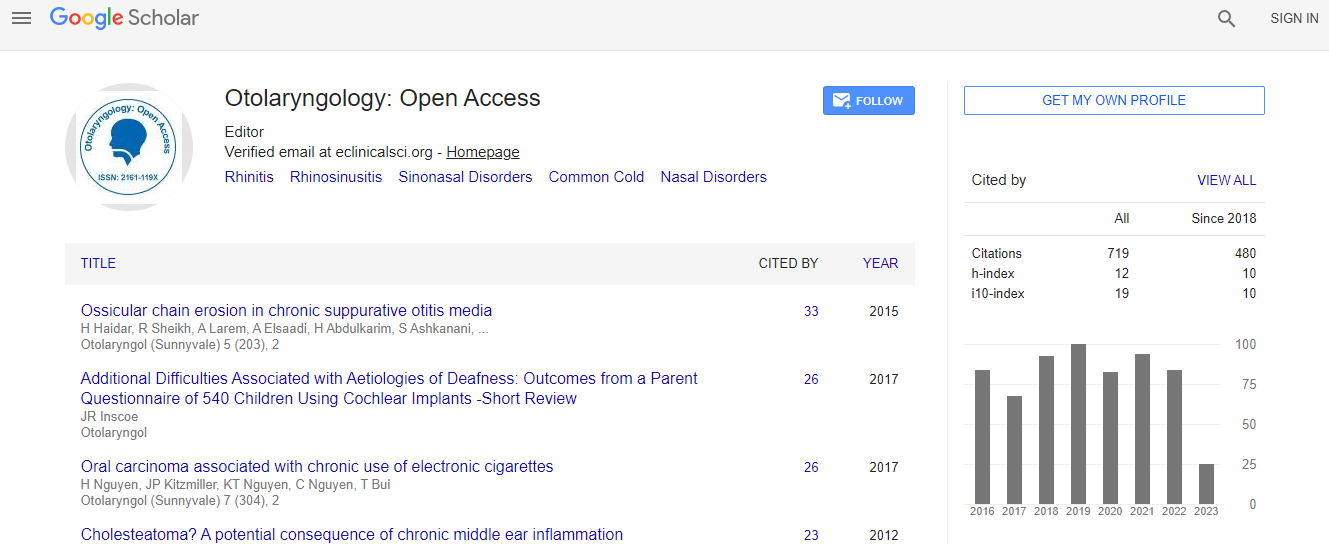Our Group organises 3000+ Global Conferenceseries Events every year across USA, Europe & Asia with support from 1000 more scientific Societies and Publishes 700+ Open Access Journals which contains over 50000 eminent personalities, reputed scientists as editorial board members.
Open Access Journals gaining more Readers and Citations
700 Journals and 15,000,000 Readers Each Journal is getting 25,000+ Readers
Google Scholar citation report
Citations : 925
Otolaryngology: Open Access received 925 citations as per Google Scholar report
Otolaryngology: Open Access peer review process verified at publons
Indexed In
- Index Copernicus
- Google Scholar
- Sherpa Romeo
- Open J Gate
- Genamics JournalSeek
- RefSeek
- Hamdard University
- EBSCO A-Z
- OCLC- WorldCat
- Publons
- Geneva Foundation for Medical Education and Research
- ICMJE
Useful Links
Recommended Journals
Related Subjects
Share This Page
Primary and salvage total laryngectomy: Influential factors, complications and survival
3rd International Conference and Exhibition on Rhinology & Otology
Milan Stankovic
University of Nis, Serbia
Posters & Accepted Abstracts: Otolaryngology
Abstract
Purpose: In this retrospective study we analyzed patients with advanced squamous cell carcinoma of the larynx and hypopharynx treated with primary total laryngectomy (PTL) between 1990 and 2007. Methods: The patients were treated by classical PTL, radiotherapy 60-70Gy, concomitant radio and chemotherapy (cisplatin and 5-fluorouracil) or salvage total laryngectomy (STL). They were followed up for 5 years and complications, survival, residual/recurrent disease and metastases were registered. Results: STL after previous radiotherapy (STL-pRT) and after chemoradiotherapy (STL-pCTRT) caused more frequent local complications than PTL. Five-year disease-free survival (DFS) rate was significantly influenced by TNM stage and localization of the primary laryngeal tumor. For laryngeal cancer it was: 61.3% for PTL, 54.1% for STL-pC-TRT, and 47.6% for STL-pRT. Incomplete responders to initial treatment had low survival rate. PTL for hypopharyngeal carcinoma and particularly salvage laryngectomy after chemoradiotherapy were associated with more frequent local complications. The 5-year DFS for hypopharyngeal cancer was lower than for laryngeal cancer. Conclusion: PTL still offers the best survival rate with low complications for advanced laryngeal and hypopharyngeal squamous cell carcinoma. STL causes more frequent local complications, especially after chemoradiotherapy. Addition of chemotherapy to radiotherapy increases the survival. Five-year DFS rate depends on TNM stage and localization of the primary tumor.Biography
Email: milanorlstankovic@gmail.com

 Spanish
Spanish  Chinese
Chinese  Russian
Russian  German
German  French
French  Japanese
Japanese  Portuguese
Portuguese  Hindi
Hindi 
